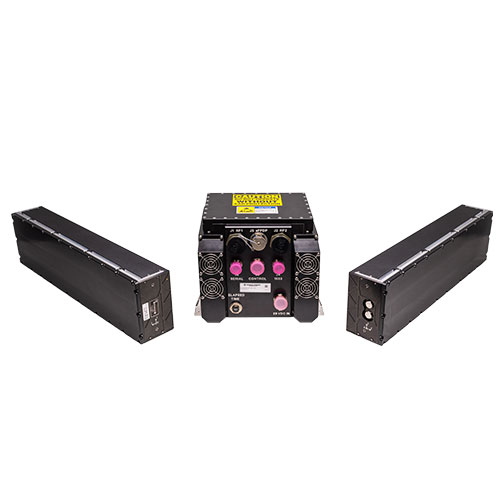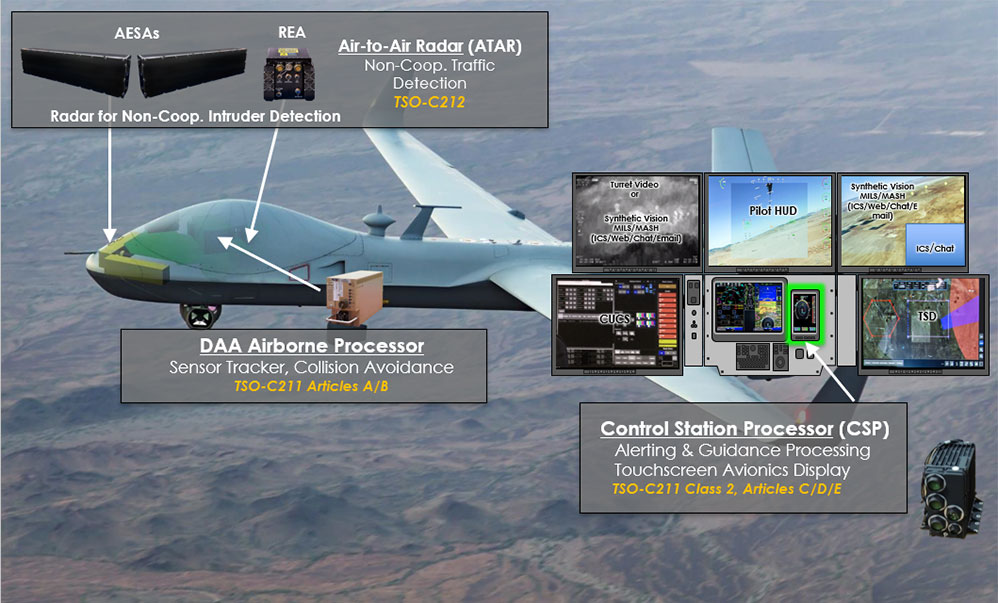Air-to-Air Radar (ATAR)

The Air-to-Air Radar (ATAR) is a next-generation traffic surveillance system for Remotely Piloted Aircraft (RPA) that provides increased performance with significantly reduced size, weight, and power (SWaP).
Designed to meet DO-366 Minimal Operational Performance Standards (MOPS), the ATAR design adheres to DO-178 and DO-254 equipment certification guidelines and follows an FAA-approved certification plan to achieve Technical Standard Order, TSO-C212, authorization. This authorization will enable RPA to operate seamlessly in both national and international airspace.
The ATAR features two upgraded Active Electronically Scanned Array (AESA) antennas and a new Radar Electronics Assembly (REA). These improved features will enable RPA pilots to detect and track aircraft within the same Field of View (FOV) as manned aircraft.
- AESA technology allows the ATAR to track multiple targets while continuously scanning for new aircraft.
- ATAR offers a tactical precipitation detection feature interleaved with the traffic surveillance mode, ensuring no impact on the radar’s target tracking performance.
- ATAR is responsible for tracking non-cooperative aircraft, supporting onboard collision avoidance capabilities for the RPA, and allowing pilots to maintain safe separation from other air traffic in coordination with Air Traffic Control.
The ATAR is also an integral component of GA-ASI’s Detect and Avoid (DAA) System. Similar to the ATAR, the DAA System is on track to obtain its own TSO authorization (TSO-C211).

Features/Benefits:
- FAA TSO authorization
- High-performance AESA
- Air-cooled antenna and REA
- Detects and tracks any aircraft in FOV, regardless of their onboard equipment
- Enables Due Regard operations in international airspace
- Facilitates full and safe integration of RPA into the U.S. National Airspace System (NAS)